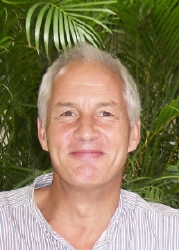| | Marc Miccozi, MD on His Spa-Biz Course and the Role of the Spa in CAM Integration | |
Summary: Marc Micozzi, MD,PhD, convened an early federal exploration of complementary and integrative medicine, wrote the first academic textbook on complementary and integrative medicine, worked with Dr. Koop on his dot.com website (may it rest), and ran an academic integrative medicine program. Lately he has been thinking outside of mainstream delivery, specifically in the spa/wellness zone. He notified the Integrator of a relationship he has teaching in an online certification program through UC Irvine's School of Business. I invited his direct comment on the spa field. Here is Micozzi's commentary, and some information about the program.
 Marc Micozzi, MD, PhD
We marked one such step on that change continuum when the University of
California-Irvine, one of the top three hospitality certification programs in the world, decided to add content on integrating complementary and alternative medicine into a resort environment. The online course, offered through the UC-Irvine School of Business from June 23-August 8 will be taught by Marc Micozzi, MD, PhD. The title is "Integrating the Business of Wellness into Your Spa." (Apologies to all for this very late notice. Hopefully it will be offered again.)
 Sponsoring a course on CAM in Spa business
Micozzi - a medical anthropologist - wonders whether "integration" will be best forged through mainstream academic and medical delivery channels. He sent the Integrator a note which included the following:
"I think the truly new ideas and models of
health and wellness are coming out of the business
schools insofar as we have a dysfunctional, non-sustainable, irrational
healthcare system using up 18% of our
economy. The medical and public health schools have had chances to act as 'think tanks' for genuine change but have too many vested
interests in the status quo. And the politicians who
talk about healthcare reform (dating back to 1992 now) have been and continue to be ill-informed as to the real opportunities to have affordable, effective, healthful,
rational, safe and sustainable healthcare. As often throughout US history, in
our economic system, meaningful change will only follow the public voting with
their feet and their pocketbooks, and a 'healing crisis' with
the ultimate bankruptcy of the current healthcare system. Fortunately for all
of us, the alternatives are already out there."
Micozzi then recommended a text on this spa industry co-edited by his colleague, Gerry Bodeker, entitled Understanding the Global Spa Industry.
Bodeker, who holds faculty appointments at Columbia Unversity School of
Medicine and in public health at Oxford University, is editor of WHO’s Global Atlas of Traditional, Complementary & Alternative Medicine. I asked Micozzi for any additional thoughts. Here are his remarks.
____________________________________
Spa Facilities for Health and Wellness Servicesby Marc Micozzi, MD, PhD
The US
healthcare system is in crisis and does not appear to be sustainable. Fortunately, alternative approaches to much of health and wellness are
available.
Presently, three-quarters
of Americans use health services now labeled as “complementary and alternative
medicine” (CAM) for health and wellness. Americans now pay for
CAM services primarily out-of- pocket. These
payments now exceed total
out-of-pocket charges for all outpatient mainstream health services.
| |
|
| |
"CAM will do better
in
natural environments,
resorts, spas than
in the
hospital-based model."
Marc Micozzi, MD, PhD
|
CAM services in the US are usually
available only in an outpatient (ambulatory care) setting in healthcare
facilities. This setting provides
only limited potential for the full therapeutic benefits of CAM.
Many people would
benefit from the application of CAM therapies
and protocols ('a cure') outside
of healthcare facilities and in a more healthful environment.
CAM care can be provided in more healthful
environments and at lower costs than in healthcare facilities while providing
vastly enhanced levels of hospitality.
Spa Facilities are
ideal settings for providing many CAM health
and wellness services together with the benefits of a restful, stress-free,
relaxing and healthy environment
Historically, much of
today’s CAM may be thought of as natural
medicine, or 'nature cures.' There is a great deal of now largely forgotten
historical evidence about the benefits of 'nature cure' during the late 1700’s,
1800’s and early 1900’s in the United
States.
The hidden or forgotten
history of American medicine is highly relevant to fully understanding the
potential benefits of CAM and natural healing
today.
There is a tremendous
opportunity to integrate the historically proven benefits of “nature cure” with
contemporary CAM therapies in Spas.
____________________________________
 Text recommended by Micozzi on the spa industry
Rogers who was the founding academic dean at Bastyr University and later the second president of the American Association of Naturopathic Physicians,has moved out of the institutions in a trajectory not unlike that which Micozzi suggests for CAM. She founded and operates the Chico Water Cure Spa on the shores of Puget Sound in the small town of Chico on the Olympic Peninsula. I can personally attest that Rogers is proving the Micozzi thesis that the spa environment is a good fit for complementary healthcare practices.
| Resumes are useful in employment decisions. I provide this background so that you may understand what informs the work which you may employ in your own. I have been involved as an organizer-writer in the emerging fields......more |  |
|
|
Popular Related Articles/Areas
Popular & Related Products
Popular & Featured Events
Dimensions of Wellness
|
|